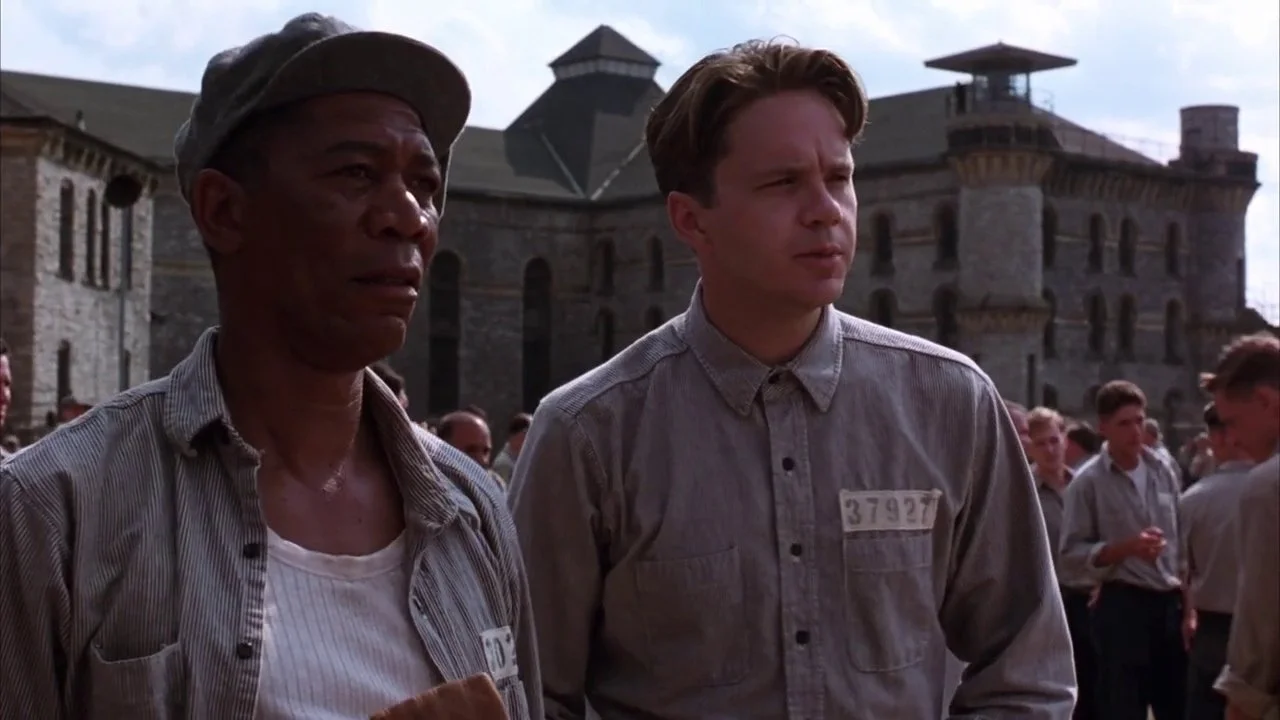10 Critical Steps to Good Character Development
When writing a quality screenplay, there’s obviously an endless list of elements you need to carefully craft in order to make it enthralling: setting, plot, ordering of scenes–the list goes on forever. But perhaps the most important element of all is the characters themselves, because that’s what the audience is going to relate to more than anything. And no matter how perfect every other part of your screenplay is, if you don’t have engaging characters, it just doesn’t matter. So, how do you make these characters more engaging? What steps do you have to take to make sure they’re as developed as can be? What type of situations can you put them in to make the story unfold in the most interesting way? Well, in this article, I’m going to attempt to answer these questions and give a couple of other ways to make sure you write the very best characters for your script. Here are 10 critical steps to good character development.
Define Your Character’s Purpose
No character can exist without a purpose. And that’s not one of those rules that you’re able to break if the script calls for it. No, it is absolutely necessary. Even if their purpose is something as small as existing for a throwaway joke at the end of a scene, they must be there for a reason. But this is especially true for your main characters. Once you have the general outline of what you want your character to be (like what they look like, sound like, do for a living, etc), you have to move on to what their goals are. Why do they do the things they do? Why am I putting them in certain scenarios? What lessons are learned in the process? And if a lesson isn’t learned, then what’s the reason why? Once you properly establish the purpose behind your character’s existence, it will help guide you throughout the rest of your writing process. Any time you encounter writer’s block or get stuck in the middle of a scene, knowing why your character’s there in the first place will undoubtedly give you a solid direction to head in.
Focus on Their Arc
Piggybacking off the first step of defining your character’s purpose, the next thing you need to do is focus on your character’s arc. Do they start in a low place and end somewhere high? Are they on a classic hero’s journey? How do the circumstances they find themselves in shift their personality, and how does this shift in personality affect the rest of the plot? Regardless of what direction you decide to head in with your character, the important thing is that you at least have a direction. Creating a dynamic character draws an audience into your story, allows for emotional engagement as they watch them change, and provides your plot the opportunity to explore deeper and richer themes. So, make sure to prioritize your character’s arc at all times when writing.
Understand Their Archetype
Every character, for the most part, can fit into some definition of an archetype (hero, everyman, mentor, villain, etc). And that’s okay, because these archetypes exist for a reason. They allow the audience to recognize your character’s place in society, relate to them in some personal way, and better understand their most natural human motivations. Fitting your character into an archetype doesn’t mean they’re not original, either. The originality comes from the nuances you assign them, not from their most general personality traits. In fact, if you’re able to establish what archetype your character fits into best, then it can actually help you focus more on these unique traits. And in doing so, allow your character to be even more dynamic as a result.
Contrast Them to Their Surroundings
Contrasting your character to their surroundings is a great way to illustrate the changes your character is undergoing, allow for the plot to really blossom, and immediately make your story more enthralling right off the bat. Without some form of contrast, nobody’s going to care, because that’s what they’re expecting. Allow me to elaborate. Let’s say you’re writing a script about an accountant. If you have the story take place at an accounting firm, and nothing else happens, it’s boring. Why? Because millions of accountants go to work at an accounting firm every day. There’s simply no reason to tune in. But say you tweak one aspect of that character and make it something out-of-the-ordinary, like a mobster or a vampire who has to work at an accounting firm for some reason, now you have a story (it might be a really dumb story, but it’s at least something). Or you can tweak the setting and put the accountant in the middle of an out-of-the-ordinary situation, like a natural disaster or zombie apocalypse. How will this character rise or fall to the occasion? Do they get corrupted along the way? Maybe they end up changing for the better. Whatever direction you head in, these contrasts will allow for a more interesting plot and character development.
Make them Unique
Okay, I’ll admit that this is by far the broadest tip on this list, but that doesn’t mean it isn’t valuable. No matter what archetype or stereotype your character may fit into, you have to tweak and refine them to make them as original as possible, because that’s what’s going to stand out to audiences once they leave the film. You can have the best plot idea in the world, but if you just stick a surface-level, flat protagonist into it, it won’t end up being a good movie. And what makes them unique doesn’t have to be something major, like a facial deformity or a tragic backstory. It can be something as small as a verbal tic, how they dress, or how they react to stressful situations. A popular way to display uniqueness in a character is to develop a completely unheard-of style of speech and communication. I know I reference The Big Lebowski a lot (it is one of the greatest scripts ever written), but take a look at the characters of The Dude and Walter. At first, they just seem like any other overgrown hippy and aggressive asshole. But the more they speak and interact with people, the more you realize you’ve never actually heard anyone talk like they do. It’s hard to achieve, but if you’re able to pull it off, your characters will be far more memorable. Another great way to make your character unique is to constantly undermine audience expectations. If your character looks like he’s a strong athlete, a fun twist to add might be that they can’t throw a ball to save their life. If they look like a nerd, maybe make them dumb as can be. At the end of the day, there are a million different routes to take when trying to create a unique character, and no way is best. It all depends on the script. All you have to do when writing is check in with yourself every once in a while and ask, “Have I met many people like this before?”. If the answer’s yes, probably best to do some rewrites.
Know Everything About Your Character
In every writer’s mind, their characters should be real people. That means knowing everything there is to know about them, even if it isn’t relevant to the script. Remember, your character most likely wasn’t born on page 1; they supposedly had decades of life experience before the events of your script began. So, try to consider what these things may have been. Think about where your character was born, what they do for work, if they have a family, if they’re an only child, if they’ve had a rough life, if they’ve had an easy life, what they wanted to be when they grew up–EVERYTHING. These might not seem important, but they are. People in the real world are products of their life experiences, so you have to treat your characters the exact same way if you want them to have realistic, emotional depth.
Implement Their Background
Not only should you, as the writer, know everything there is to know about your character, but you also have to make sure that whatever background information you tell the audience is put to good use. If, for some reason, you decide to tell the audience that your character used to be an Olympic swimmer, then it’d be a good idea for that to become helpful later (perhaps you’re writing an adventure movie where a big flood crashes in during the climax). If you don’t have a flood or other plot device where swimming is necessary, then make sure that background information is at least important to your character’s personality or arc throughout the film (maybe they’re out of shape now, and you want to emphasize their physical decline). But if you come to realize that your character being an Olympic swimmer isn’t really important to their personality, and it doesn’t become relevant during the climax or any other parts of the story, then it’s probably not a great idea to mention it at all. So, whenever writing a character’s background, make sure to implement it wisely.
Define Them Through Their Introduction
Remember, movies are not a lengthy medium. Even the longest films limit the amount of time each character has on screen, so you have to make the most with every second you have. This means introducing your characters with a bang. Define them through your introduction. That way, the audience is able to take away exactly what kind of person the protagonist/antagonist is within a few short minutes. My favorite example of this is the opening scene of The Dark Knight. We witness the bank robbery from the perspective of several unidentified hired goons, who begin to kill each other off one by one at the request of the mysterious Joker, who set up the heist. By the end of the robbery, the Joker is revealed to be the only one left, allowing himself to walk away with the entire pot of cash. So, even though the Joker is really only present for maybe two minutes out of a ten-minute opening sequence, the audience already knows what kind of chaotic, anarchist villain he’s going to be. While I understand that not everybody can write as good of a character introduction as that, it serves as the perfect example for how to say everything there is to say about your characters in as little time as possible.
Create a Conflict That Drives Them
You must, must, must create a conflict that tests and drives your character appropriately, otherwise there’s no point in telling your story. This goes back to Step 2, “Focus on Their Arc”. Once you know what kind of emotional journey you want your character to face and what changes you think would be interesting for them to undergo, you must then develop the perfect conflict that will get them to that promised land (or you can come up with the conflict first and develop the character after, it just depends on how you write). Either way, these two elements must be connected. Obviously, this is easier said than done. It’s gonna take hours of brainstorming and drawing ideas out, but once you figure out that perfect conflict that matches up seamlessly with the character you’ve developed (or vice versa), it’s going to make your script a million times better.
Identify Their Strengths and Weaknesses
The audience HAS TO know what your characters are good and bad at if you want them to accurately gauge the conflicts presented. This is essential to good character development and makes your script far more interesting to read. And unlike Step 8, “Define Them Through Their Introduction”, these things don’t have to be presented immediately. Sometimes, they may not become present until halfway through your movie. But the important part is that they ARE eventually presented. If your character is scared of heights, we need to know that. If they stutter when they’re nervous, we need to know that. If they just became sober and are struggling to remain so, then we need to know that. Without clearly identifying your character's strengths and weaknesses, then the audience has no idea whether to feel confident or scared during moments of major conflict. But the more you establish these traits, the more weight your conflicts carry. And in doing so, the better your characters and script are overall.
CONCLUSION
Character development is hard. And when there’s a million other elements of a script to figure out, it can be a real headache. But don’t let it become secondary to your plot, setting, or anything else, because the characters are what the audience is going to resonate with more than anything. Basically, all of these points can be summed up as making sure you know your characters better than everyone, presenting all useful information about them with purpose, and trying to create unique characters that are put in unique situations. If you’re able to do these things efficiently, then you’re on your way to creating something great.











